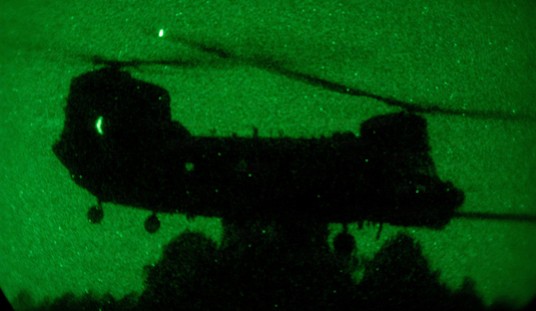
This weekend, the RedState Department of History notes the passage of the world’s first flying aircraft carrier in today’s entry — right along with the worst airship disaster in history.
On April 4, 1933, the USS Akron was lost in a thunderstorm off the coast of New Jersey, with 73 of the ship’s 76 crew and passengers killed. It was the greatest loss of life in any airship crash.
When the subject of airship disasters comes up, most people naturally think of the Hindenburg. But more than half of the passengers and crew of that ship survived the mooring disaster in 1936, and the death toll was less than half that of the Akron, terrible though it was.
But, I digress. The Akron was the largest helium-inflated airship ever built — and could carry three different types of fighter planes to escort it during fleet recon missions, making it the world’s first flying aircraft carrier. Most notably, the Akron was able to carry Curtiss F9C “Sparrowhawk” parasite fighter planes in its internal hangar, which could be raised and lowered out of the airship on a trapeze. To see the process in action, click here. In later years, the B-36 “Peacemaker” repeated the Akron‘s feat by carrying the XF-85 “Goblin” fighter plane in its belly.
But, I digresss again. The Akron had already suffered three minor accidents prior to that fateful day in 1933 – but when the ship lifted off to assist in the calibration of radio direction finder stations (the ancestor of modern radar), the Akron flew into a violent storm.
Around 12:30 a.m. on 4 April, the Akron was caught by an updraft, followed almost immediately by a downdraft. Commander McCord, the captain, ordered full speed ahead, ballast dropped. The executive officer, Lt. Cmdr, Herbert V. Wiley, handled the ballast and emptied the bow emergency ballast. Coupled with the elevator man holding the nose up, this caused the nose to rise and the tail to rotate down. The descent of the Akron was only temporarily halted, before downdrafts forced the airship down farther. Wiley activated the 18 “howlers” of the ship’s telephone system, a signal to landing stations. At this point, the Akron was nose up, between 12 degrees and 25 degrees. The engineering officer called out “800 feet” (240 m), which was followed by a “gust” of intense violence. The steersman reported no response to his wheel as the lower rudder cables had been torn away. While the control gondola was still hundreds of feet high, the lower fin of Akron had struck the water and was torn off. The Akron broke up rapidly and sank in the stormy Atlantic.
Wiley, Boatswain’s Mate Second Class Richard E. Deal, and Aviation Metalsmith Second Class Moody E. Erwin were the only three aboard to survive. Most of the fatalities were caused by drowning and hypothermia. There were no life jackets aboard and the ship’s life raft was never deployed. Wiley describes the ordeal at this link.
Wiley later commanded the USS Macon, whose crash at sea in 1935 ended the Navy’s rigid airship program. However, due to the lessons learned aboard the Akron, only two lives were lost aboard the Macon.
Friends, the news can only get better from here. Enjoy today’s open thread!












Join the conversation as a VIP Member